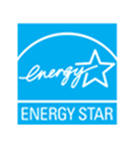by Brianna Crandall — November 22, 2021 — Earlier this fall, the U.S. Environmental Protection Agency (EPA)  announced expanded efforts to drive energy efficiency improvements among U.S. data centers. Through its Energy Star program, EPA launched an updated specification for Energy Star certification of data storage products, unveiled a brand-new website experience designed to serve as the go-to place for data center energy efficiency resources, and will be updating its 1-100 Energy Star score for data centers.
announced expanded efforts to drive energy efficiency improvements among U.S. data centers. Through its Energy Star program, EPA launched an updated specification for Energy Star certification of data storage products, unveiled a brand-new website experience designed to serve as the go-to place for data center energy efficiency resources, and will be updating its 1-100 Energy Star score for data centers.
Joseph Goffman, principal deputy assistant administrator for EPA’s Office of Air and Radiation, stated:
The data center computing sector is growing rapidly. Reducing the sector’s annual 70 billion-plus kWh use is essential to fighting the climate crisis. The Energy Star updates EPA is announcing today will lead the industry towards greater innovation and deep carbon savings.
Ten years ago, data center energy use was predicted to grow exponentially as digital computing expanded. However, gains in energy efficiency — both at the network hardware and storage level, as well as at the building level — have mostly offset this growth, says the EPA. Between 2010 and 2018, data center computing grew by 500 percent, while data center energy use only grew by six percent. Energy Star played a significant role in this progress, but much more is required as digital computing data needs continue to grow rapidly.
EPA’s Energy Star program has been a critical player in the drive to improve the energy efficiency of data centers. Data center equipment that earns the Energy Star label is independently certified to meet strict efficiency specifications set by the EPA. For example, labeled computer servers are on average 30% more efficient than non-certified products. In addition to servers, eligible products include uninterruptible power supplies (UPSs), data center storage, and large network equipment like switches and routers.
Earlier this year, EPA released an updated Energy Star specification for data center storage products, adding active-mode requirements and requiring more efficient power supplies. The program also added new how-to content and case studies to its website.
Energy Star also provides data center owners and operators with a 1-100 ENERGY STAR score that rates the energy efficiency of their entire facility compared to similar facilities nationwide, as well as Energy Star certification to those that outperform their peers.
More than 190 data centers representing nearly 30 million square feet of floor space have earned EPA’s Energy Star certification. The Energy Star score for data centers was first launched in 2010 and is based on 2008 survey data. Since then, the number of data centers has grown substantially, and much work has been done to improve their energy efficiency.
This fall, to ensure that the Energy Star score continues to give data center owners and operators an up-to-date picture of their performance, EPA will partner with The Green Grid, a leading data center industry association, to conduct a survey of data centers’ energy and water use. EPA intends to use the survey results to update its 1-100 Energy Star score for data centers.
Data centers are one of the most energy-intensive building types, consuming 10 to 50 times more energy per square foot than a typical office building. In 2014, data centers in the U.S. consumed an estimated 70 billion kWh, representing about 1.8% of total U.S. electricity consumption. Based on estimates in 2016, U.S. data centers were projected to consume approximately 73 billion kWh in 2020.
See a list of ENERGY STAR certified data centers.
Learn more about ENERGY STAR certified data center products.
Learn more about ENERGY STAR for data centers.





